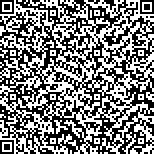下载中心
优秀审稿专家
优秀论文
相关链接
摘要

随机辐射传输模型可用于模拟水平分布不均一森林的辐射传输过程。本文以云南松林分为研究对象,提出一种应用随机辐射传输模型的郁闭度反演方法。该方法以随机辐射传输模型中参数与林分郁闭度的定量关系为基础,提出了针对云南松的冠型等效模型,构建了郁闭度和卫星反射率(GF-1和Landsat 8卫星影像)的查找表,并实施了反演。基于野外实测的30个样地进行了郁闭度数据验证,并和基于NDVI回归模型的反演方法进行对比。结果表明,反演结果能够较准确反映云南松林分郁闭状况(R2=0.8345,RMSE=0.0688),通过冠型修正能够降低反演误差,冠型等效模型是合理的。反演方法机理清晰且适用范围广,研究成果可为大面积森林郁闭度反演提供模型和方法支持。
Remote sensing is an important method used to estimate forest canopy closure in large scale. The three kinds of remote sensing algorithms for canopy closure retrieval are statistical, physical, and mixed models. Although statistical models are commonly used, they lack physical explanation and are limited in local areas. Physical models have clear understanding on mechanism, which can be used in large areas. However, due to higher complexity, physical models are less applied. The Stochastic Radiative Transfer (SRT) model is applicable in simulating forests with horizontally distributed heterogeneity, which may represent different canopy closures. Exploring the inversion method using the SRT model could improve the efficiency and precision of canopy closure inversion.On the basis of the SRT model, an inversion method has been proposed on canopy closure retrieval of Yunnan pine forests. The fundamental step is to determine the quantitative relationship between the canopy closure and the probability of finding foliage elements in SRT model. To match the Yunnan pine crown shape, an equivalent model was used to correct the cylinder shape assumption. Then, a look-up-table was constructed to inverse the canopy closure to obtain the reflectance from GF-1 and Landsat 8 satellite images. The probability of finding foliage elements and leaf area index were determined in the case of a minimum difference between simulated reflectance and satellite observations, and to calculate the canopy closure on the basis of the stochastic Beer–Lambert–Bouguer law. Thirty plots of field data were used to assess the inversion accuracy. A statistical inversion method based on NDVI was conducted for comparison.Results showed that the inversion can accurately map the canopy closure of Yunnan pine forests in the study area (R2=0.8345, RMSE=0.0688). Reflectance of the bands used for retrieval performed sensitively to canopy closure. The use of composite image from GF-1 and Landsat 8 is feasible. The equivalent shape correction model is reasonable, which reduced RMSE by 0.0466, and the algorithm is flexible in different crown cases.This study can support forward models and inversion methods for large-scale forest canopy closure retrieval. The research could be extended to any tree species by changing the model parameter input, and any crown type by crown shape equivalent correction.

